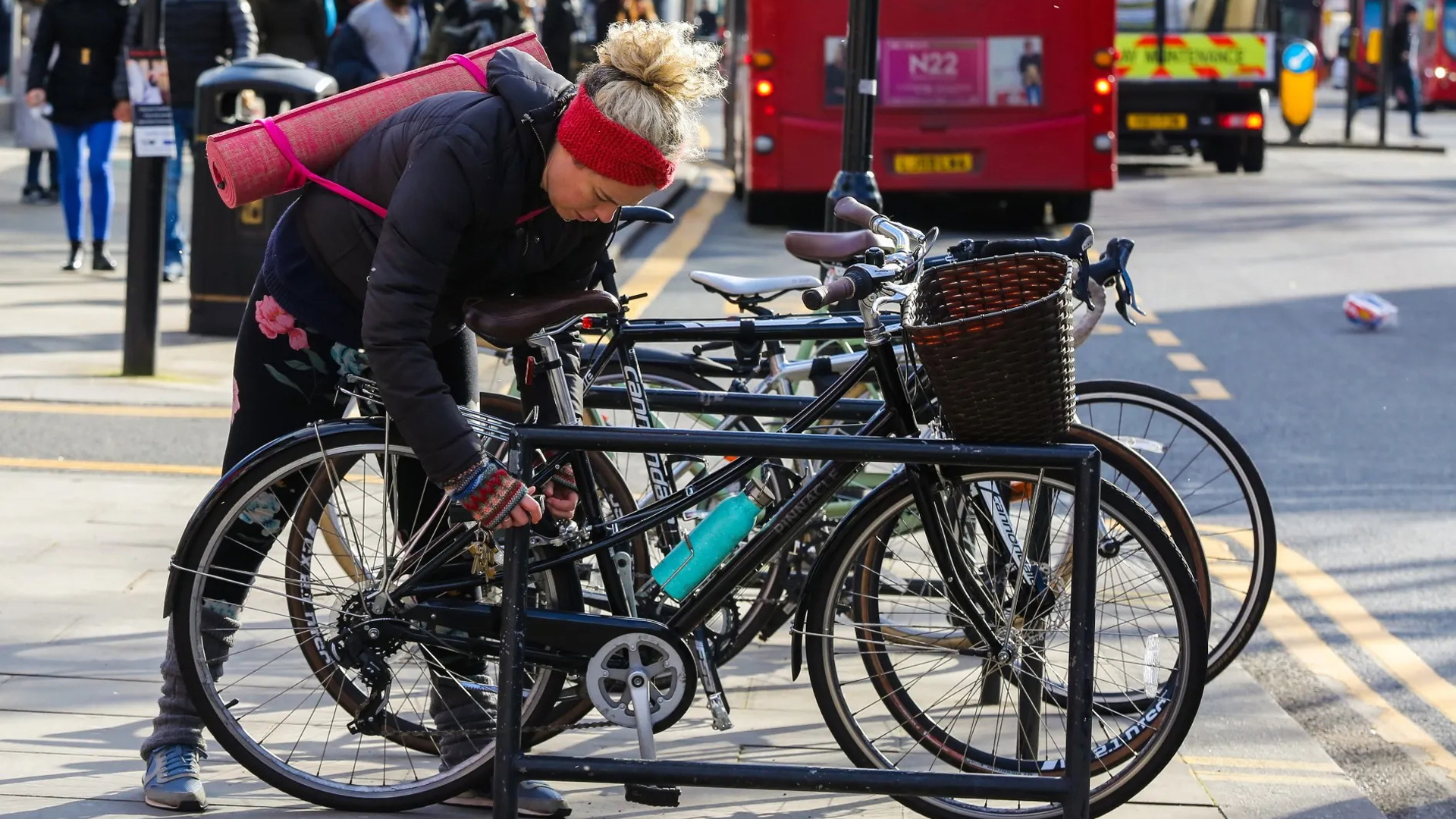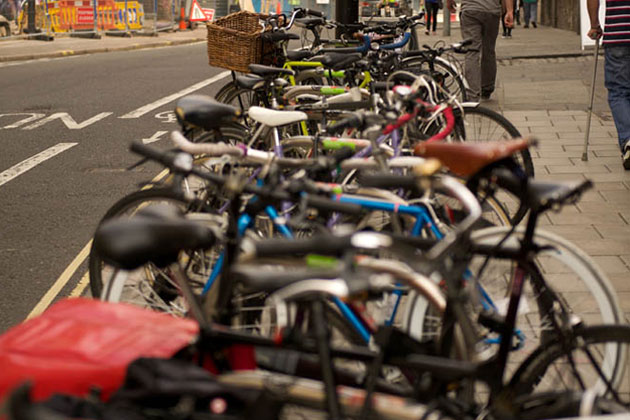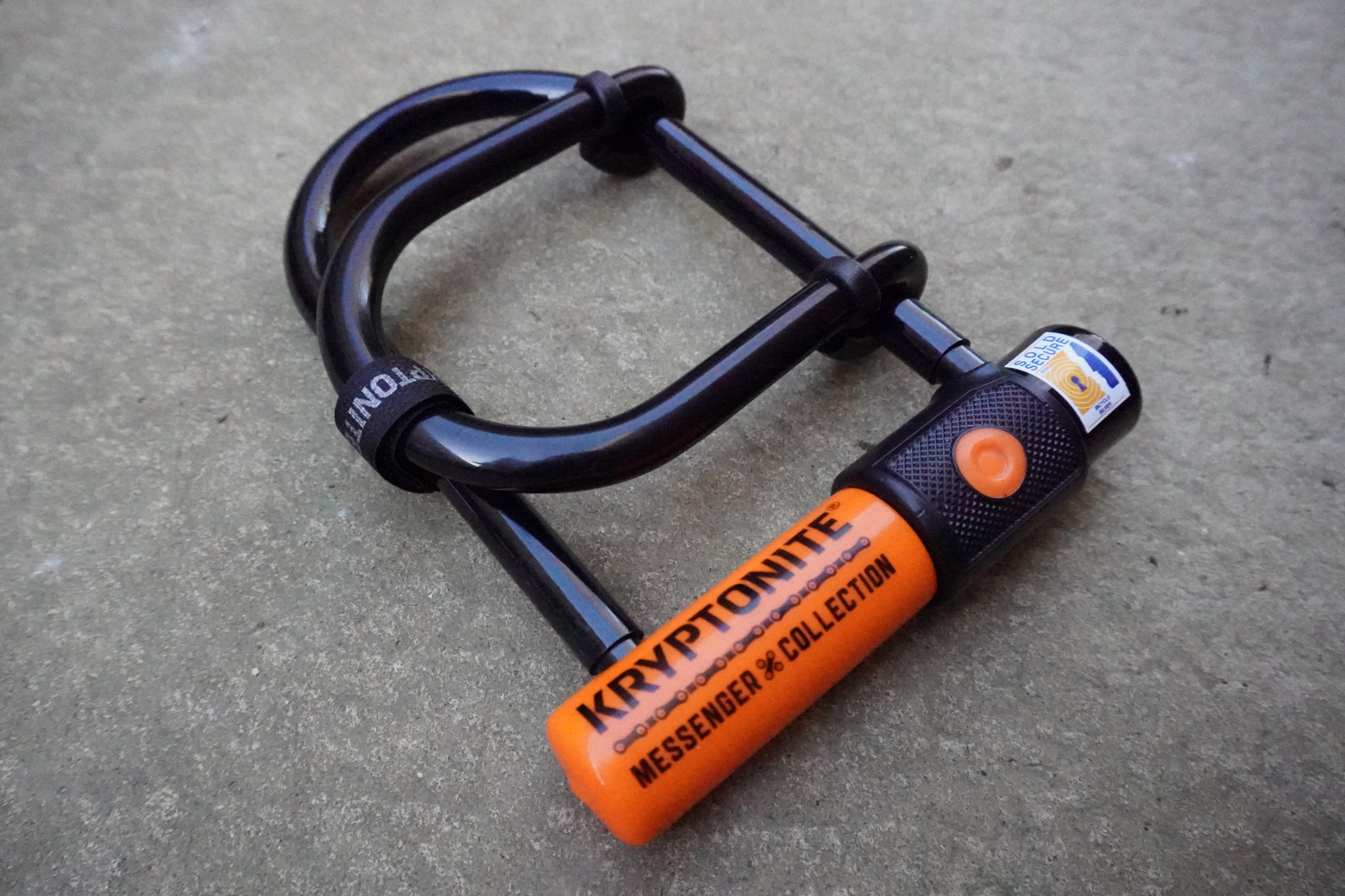
Whether cycling to work or simply popping to the shops, you’re more than likely going to be leaving your bike somewhere away from home for a prolonged period of time.
However well protected, theft can still happen, be it of the bike or associated components and accessories. Whether your bike is targeted by an opportunist or hardened thief, there’s plenty you can do to deter them or make it extra difficult. You should also ensure you’re well covered should someone manage to get their hands on your bike.
We have a dedicated review of the best bike locks, but read on for our top tips on how to keep your bike secure while commuting or riding in urban areas.
1. Store your bike somewhere secure
This sounds like an obvious one, and of course it’s not always possible, but if you're cycle commuting and your employer has bike storage facilities on site — make good use of them. Your bike will be a lot safer behind a security guard or possibly under CCTV, in a bike shed or bike room, than it will be on the streets. Even so, there’s still a small chance of theft, particularly of accessories, so remove lights, a bike computer and anything else that’s easily swiped, and follow the advice below all the same.
2. Find a busy area to lock your bike

If you don't have access to a secure bike parking area, you'll need to find another suitable place to lock your bike.
Try and choose somewhere with heavy footfall and/or traffic, and avoid dark alleys or otherwise remote locations with few pedestrians. If a thief does take a fancy to your bike, it’s going to be a lot easier for them to work on breaking your locks if it’s somewhere quiet where they’re not likely to be observed or disturbed. Busy areas overlooked by shops and offices act as good deterrents.
CCTV is also useful; banks and ATMs are likely to have good coverage, but most shopping streets will also probably have CCTV cameras. Don’t assume you’ll be able to secure this if your bike is stolen though, as a business may not be prepared to share its footage.
It’s also worth looking for somewhere where there are lots of bikes locked — there’s safety in numbers and if your bike is locked effectively, the odds are that a thief will pick something easier to steal.
3. Find a secure anchor to lock your bike to
The best bicycle lock you can afford is essential (more below), but just as important is the choice of anchor point. There’s no point in splashing out on a strong lock to then secure it to a wooden post or similar. Most designated cycle parking has fixed U-shaped anchor points, but if you’re locking your bike somewhere else make sure that it’s not possible to simply lift it off, and ensure the anchor can’t easily be cut through, such as a thin railing or post. There have been cases of thieves sawing through U-shaped anchors in advance, so that they can just remove any bike using them. Ideally, lock your bike to two separate anchor points.
Keep in mind that some building owners have specific prohibitions posted and may remove a bike secured to their property, so make sure it’s somewhere where you’re allowed to lock it.
4. Choose the best bike lock you can afford

There are all sorts of bike locks available: cable locks, chains, D-locks, cafe locks, folding locks, wearable locks… most importantly, to prevent theft, it needs to be of a high quality. How secure you go depends on how you're likely to use it.
In the UK, there’s an independent testing body, Sold Secure, which has tested and rated the majority of locks on sale. Look out for a Sold Secure Gold or Diamond-rated lock, and if you need some help deciding, we suggest a range in our piece on the best bike locks, ordered by their rating. Even better, if you can, use two locks, so there’s more to break to successfully lift your bike.
It's possible you'll need to make some compromises, particularly if you need to carry the lock with you on your commute. Weight is a big factor, as is size and, of course, cost. D-locks tend to be the most secure, and some chain locks are highly rated too, although the latter can be extremely heavy to pedal around with. Cables can often be cut more easily so they're better used in combination with something more solid.
Alarmed locks are also available. These battery-powered bike locks will beep if someone just knocks against them, but a loud siren will be activated if they continue to be agitated. Some will even alert you via a phone app that they’ve been disturbed.
Position your locks so that they’re tight against the frame, particularly if you’re using a chain lock. The less leverage a thief can get on the lock, the harder it will be to break it. The lock barrel is usually the weakest point in a lock, so try to position it so that it’s facing to the rear and, therefore, harder to access.
5. Lock your bike through the frame and wheels
Don’t just think about the frame — you should (sensibly) try to lock as many parts of the bike as possible. Wheels are an obvious one and, ideally, you should use one lock through the frame and rear wheel, secured to an anchor. A second lock should go through the front wheel, the frame and a separate anchor. It’s quick and easy to remove most bike wheels, particularly if you have quick release hubs, and you don’t want to find that someone has stolen your wheels while you were at work. Often, commuters will use a combination of a quality D-lock, through the front wheel and frame, and a long cable to loop around the rear wheel and other parts.
Handlebars, with their pricey shifters, and saddles can fall prey to thieves too, and it’s not an uncommon sight to see a bike locked up without a saddle and seatpost. This could be theft, but some cyclists will take the saddle and seatpost off and into the office with them, particularly when the seatpost clamp uses a quick release mechanism.
There are more and more security devices being developed in the fight against bike theft. Hexlox, for example, creates invisible security through their unique bolts, wheel skewers and thru-axles, which replace the originals and cannot be removed without a key. Pinhead offers something similar. They’re not cheap, but could be a worthy investment.
It’s not just the bike and its components that you need to keep safe. Remove accessories like lights, pumps, saddlebags and computers and take them with you too.
6. Insure your bike
It’s a good idea to have separate bicycle insurance for your commuter bike and accessories. You might find that home insurance policies don’t cover your bike if it’s locked up away from home, but, additionally, there may also be an excess and the value of cover may not fully pay for a replacement bike. Cycle insurance often covers legal expenses and third party liability too.
Most will have specific lock requirements — normally you will need to have secured your bike with at least a Sold Secure Silver lock to make a claim, so having insurance goes hand in hand with purchasing a decent bike lock.
7. Get your bike registered or marked

In the UK, you can use Bike Register to register the details of your bike, and there are equivalent services in other countries too. For a one-time fee, you can record details of your bike, such as the frame number. You'll be provided with a set of indelible stickers to mark up your bike, making it harder to sell it on, as potential purchasers can check if it’s been recorded as stolen.
More advanced kits allow you to mark your wheels and other components, not just the frame. Police forces will sometimes mount free bike registration drives, so check if there’s one planned where you live. And if you have bike insurance, some companies will send out a DNA marking kit. All these kits make stolen bikes not only easier to identify and return to the owner, but, when using the associated warning stickers, also less of a target.
As a matter of course, you should keep a record of your bike’s frame number, which is usually stamped or fixed under the bottom bracket. Take photos of your bike and any distinctive or non-standard components that are fitted to it.
8. Lock your bike up at home too
Don’t simply think about the time your bike is left unattended while you’re at work, you should keep it locked up at home too. This is particularly important if you store your bike outside or in a shed, and the same guidance applies.
There are a range of companies that manufacture insurance-approved high-security bike containers and storage solutions. Asgard is a popular one, and they come in a variety of sizes, with designs that make them extremely hard to get into. You should still lock your bike within the container too, just in case.







